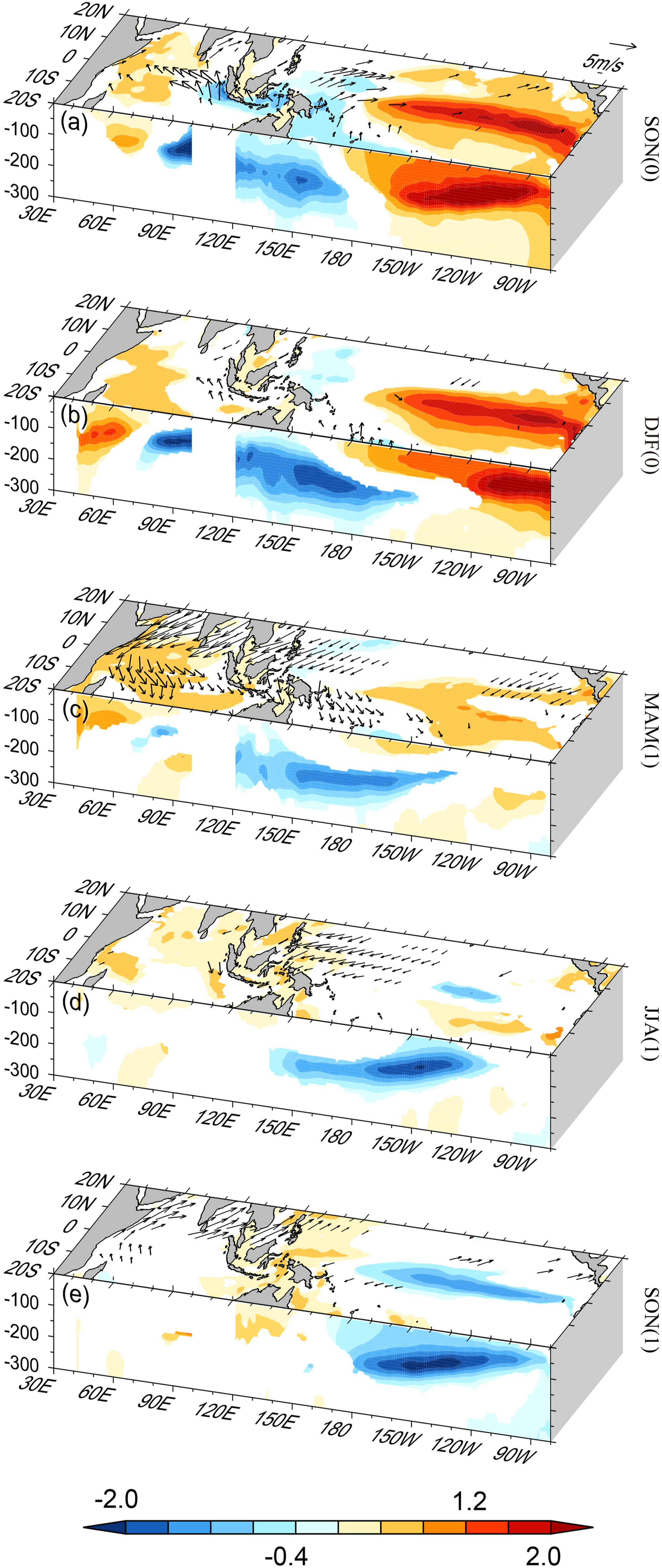A Positive Indian Ocean Dipole Leads to an Indian Ocean Basin Mode that Favors the Development of La Niña the Following Year
Jing Wang, Shouwen Zhang, Yuanlong Li, Janet Sprintall
Published in Geophysical Research Letters, April 2025
Interactions among the El Niño-Southern Oscillation, Indian Ocean Basin mode (IOB), and Indian Ocean Dipole (IOD) significantly impact global climate variability and seasonal predictions. Traditionally, positive IOD (pIOD) and IOB warming events are associated with El Niño, driven by its influence on the tropical Indian Ocean through Walker Circulation anomalies. Our findings enrich this framework, revealing that a pIOD without El Niño can independently trigger IOB warming, and both types of pIODs can induce La Niña events. While El Niño primarily forces IOB warming and subsequent La Niña development via the atmospheric bridge across the Maritime Continent, pIODs independent of El Niño influence IOB warming through oceanic dynamics, which further favors La Niña development in the following year. The NMEFC-CESM model sensitivity experiments underscore the critical role of thermocline processes in this mechanism, dependent on the pIOD's temperature amplitude, offering vital insights for forecasting post-IOD, IOB, and La Niña events.

Fig. Composite SSTA and subsurface temperature anomalies (shading, unit: °C) and surface wind anomalies (vectors, unit: ms−1) in the tropical Indo-Pacific Ocean originating at the mature phase of the pIOD (a) SON(0); (b) DJF(0); (c) MAM (1); (d) JJA(1); (e) SON(1). The vertical section is shown for temperature anomalies along the equator. Shading and arrows indicate anomalies that significantly differ from zero at the 95% confidence level. Here the anomalies are relative to a climatological seasonal average from 1982 to 2020.
Wang, J., Zhang, S., Li, Y., & Sprintall, J. (2025). A positive Indian Ocean Dipole leads to an Indian Ocean basin mode that favors the development of La Niña the following year. Geophysical Research Letters, 52, e2024GL112632. https://doi.org/10.1029/2024GL112632